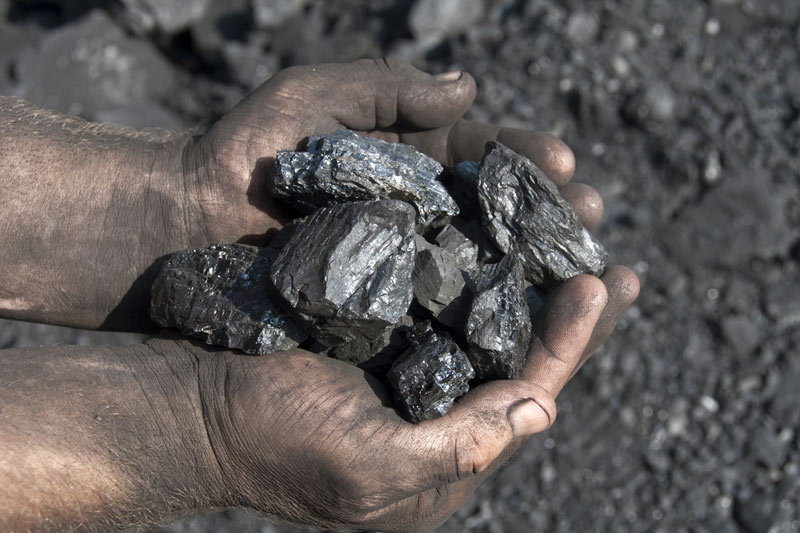(Bloomberg) -- Few places better illustrate the tension between pursuing profit and tackling climate change than Australia’s Abbot Point port in northern Queensland.
It’s here, 30 miles from the Great Barrier Reef, that Adani Enterprises Ltd. wants to increase capacity so it can ship more coal from a new A$2 billion ($1.4 billion) mine nearby. The expansion faces opposition from environmentalists, who say it will endanger the health of the reef, one of the seven wonders of the natural world, but has been backed by the government along with the new mine.
It’s emblematic of Australia’s dilemma: blessed with some one the world’s richest natural environments, from Kakadu wetlands in the Northern Territory to the primordial Tarkine rainforest in Tasmania, yet reliant on mining and exporting one of the most ecologically-damaging fossil fuels to keep its economy ticking.
Under Prime Minister and his Liberal-National coalition government, political and economic arguments in favor of fossil fuels are overpowering popular interest in tackling climate change for now. The coalition was keen to disburse A$1 billion in taxpayer-funded loans to help Adani build a rail link for the project, but the plan was vetoed by Queensland’s state government, which is controlled by the national opposition Labor Party.
Though one of the world’s biggest sources of coal and natural gas, a decade of political dithering and policy missteps have saddled Australia with rising power prices and at times unreliable supplies. Successive governments have failed to provide the investment certainty needed to bridge the transition to renewables such as solar and wind as aging coal-fired plants close.
The government is primarily focused on mollifying voters hit with higher electricity bills and sees coal as the solution. Yet those same voters also want more action against climate change, with 84 percent wanting the government to boost renewable power generation, according to a June poll by Australian think tank the Lowy Institute.
“The challenge is largely political” said Mark Howden, director of the Climate Change Institute at Australian National University. “We have a range of barriers both in terms of policy, or lack of policy, to incentivize change.”
The need for change is becoming more urgent, according to a panel of scientists convened by the United Nations. The world must invest $2.4 trillion in clean energy every year through 2035 and cut the use of coal-fired power to almost nothing by 2050 to avoid catastrophic damage from climate change, the UN’s Intergovernmental Panel on Climate Change wrote in a report last month.
The atmosphere is already almost 1 degree Celsius (1.8 Fahrenheit) hotter than it was at the start of the industrial revolution and on track to rise 3 degrees by 2100, according to the report. That’s double the pace targeted under the 2015 Paris climate agreements.
“Post-Paris, the world has largely moved on toward adopting a de-carbonization pathway,’ ’ Christoph Frei, chief executive of the World Energy Council, said during a visit to Australia last month. “In Australia, we don’t have that certainty and that’s probably the worst situation you can be in.”
An increase in 1.5 degrees would pose an increased risk of coral bleaching on the iconic Reef, longer droughts on the driest inhabited continent and more intense bushfire seasons, according to Howden.
Many Australian lawmakers still find the economic argument for supporting coal more compelling than avoiding possible environmental Armageddon. The fuel is overtaking iron ore as Australia’s largest export earner this fiscal year, with taxes from more than $40 billion a year in overseas sales helping bolster government coffers. Australia generates about 80 percent of its power from coal and gas, compared with the global average of about 59 percent, according to Bloomberg NEF data.
That looks unlikely to change under the current government. Morrison, who in 2016 brandished a lump of coal in parliament to show his support of the fuel, is considering using taxpayer dollars to subsidize new coal-fired plants. Following the IPCC report, Morrison said he was confident Australia would meet its Paris emissions-reduction target -- a minimum 26 percent cut from 2005 levels by 2030 -- “at a canter.”
“We can’t run an energy system that relies on intermittent power sources like wind and solar,” Morrison said in a Oct. 16 Sky News interview. “They’re never going to be what keeps the lights on.”
‘No Effective Policy’
Not everyone is convinced. Tim Flannery, perhaps Australia’s best known environmentalist, said the country’s Paris targets were underwhelming compared with developed world peers and “even those targets look unachievable.”
“The government has no effective policy to achieve them,” Flannery said in an interview.
Unlike the Trump administration, Australia has not formally withdrawn from the Paris framework. But Morrison’s government is refusing to legislate or regulate measures to ensure the targets will be met. The nation is the world’s number one carbon emitter on a per-capita basis and its renewables capacity is among the lowest in the developed world.
The policy vacuum makes it difficult for energy companies to make investment decisions needed for the transition to cleaner power.
“It’s hard to decide to invest in long-life assets when you don’t know what the rules of the game are around carbon constraint,” said Sarah McNamara, chief executive officer of the Australian Energy Council, which represents companies in the wholesale and retail energy markets.
ANU’s Howden says Australia’s lack of action on climate change is perplexing to many of his international colleagues.
“When other countries look at us,” he said, “they wonder why we’re not aligning ourselves with what they see as our own self-interest.”
